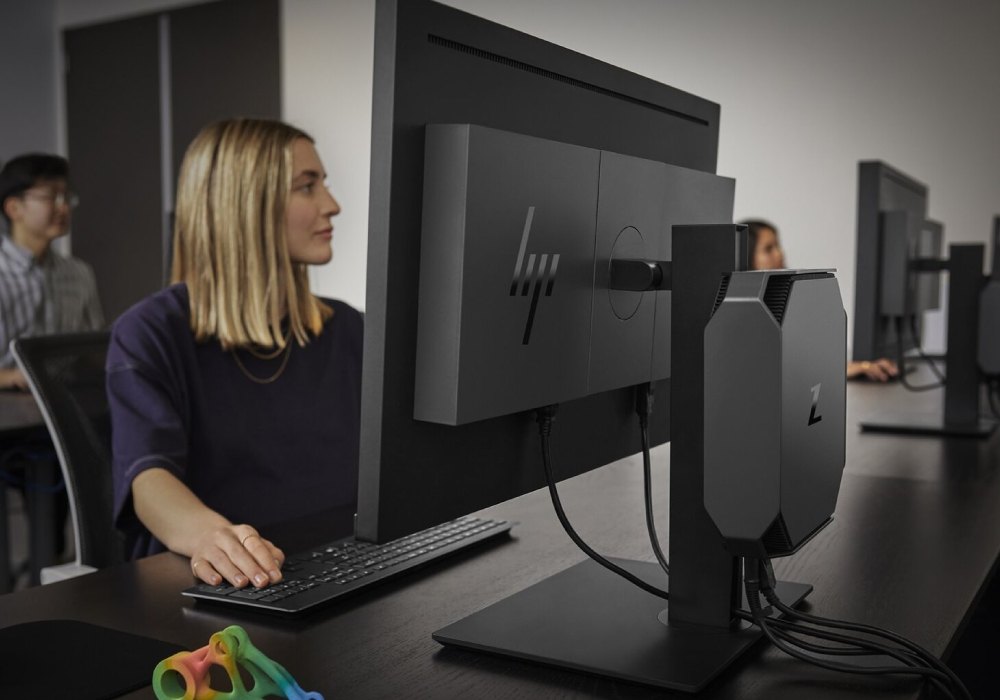Days are gone when you had to rely on bulky and absurd looking PC’s to do the necessary computing tasks. Over the past few years, technology has greatly impacted the computers and we can now have access to some of the most powerful and compact size small desktop PC’s.
Mini PC desktops are a variant of computers that possess most of the features and capabilities of a large computer but come in smaller physical size. In the past, minicomputers have been mocked for not having a computing power that a typical user needs. But the steady growth of technology enables us to experience some of the solid features on small desktop PCs as well.
With that being said, there are still some critical factors that you need to consider before pouring money on buying a new mini-PC.
Limited Upgradability
Unlike to a tower PC, small desktop PCs come with a limited upgradable feature. Like very few ports are generally available in a mini PC desktops to connect other parts. If you open up a mini-PC, you will come to know that it is perfectly packed with the components and there is no room available for anything more.
So, you can’t expect to buy a Core i3 CPU now and then upgrade it to Core i9 later, as the CPU available in mini-PCs is non-upgradable. Well, you can technically upgrade it if you are up for a bit of soldering but remember it will nullify your PC’s warranty. So, the most viable solution is to just change the replaceable parts which are only RAM and the hard drive and sell your old mini PC online.
Mini PC’s RAM Requirements
Laptop RAM being smaller in size is the only RAM supported by mini PC’s which means you can’t use a tower PC RAM with a mini PC. And the reason is of course the size of a tower PC RAM.
Another important consideration is to check the available DIMM slots in a RAM as most small desktop PC’s come with two slots while some support only one.
Hard drive Considerations
Mini PC’s usually support M.2 or 2.5-inch hard drive sizes. Talking about M.2, it is only a flash storage and a new version of what was previously known as “mSATA’. The M.2 SSD’s usually offers faster processing speeds than a standard SSD.
On the other hands, a 2,5-inch hard drive offers flexibility between SSD and a traditional HDD. 2.5-inch drives cost you less bucks and more readily available on the market than M.2. You get more speed with a 2.5-ich SSD than a 2.5-inch HDD, but an HDD delivers more storage space than an SSD. So, the rule of thumb is if you want speed and capacity, go for a 2.5-inch SSD. However, if capacity what matters for you the most, not the speed, you can get your hands on a 2.5-inch HDD.
CPU Selection
If we see on the desktop front, Intel and AMD are two of the main contenders for the best processors since ever. However, there is no clear winner between these two as both chipsets continue to present several avant-garde and powerful features time to time for tower PCs and laptops.
And the things are not so much different in the case of mini PC desktops as the same laptop processors are being used in Minicomputers. Recently, AMD launched Radeon-powered ultra-fast and innovative processors, offering the best performance in the graphics department. And this AMD’s launch outperforms Intel’s processor being available at same price.
If you are aiming for a mini PC to be ultimately used as a Home Theater PC for your TV, it is recommended to go with AMD over Intel. You can also explore Apple’s mini PC series named as Mac mini. Initially, Apple was using Intel’s processors in its minicomputers, but now Apple has been shifted towards its self-developed chipsets.
Not Suitable for Gaming
Small desktop PCs are not usually recommended for gaming, although AMD processors are better than Intel’s when it comes to gaming. The reason is crystal clear, due to the size constraint, mini PC desktops can’t be inculcated with the robust processors, graphics cards and an efficient cooling system beyond a certain limit.
Whatsoever, if you are a casual gamer and just want to have a normal and non-intensive graphics in-game play, a small desktop PC can get the job done.
Check Supported Operating System
Barebones PCs don’t come with any Operating System installed such as Windows or Linux, as there is no hard drive. But as far as non-barebones small PCs are concerned, some of them come with the OS and some of them don’t. So, it makes sense to check that before the purchase.
There are basically two phrases that you see on the box of a typical mini PC, “supports Windows” or “comes with Windows”. A small desktop PC with the words “Supports Windows” written means that it can work but is not come pre-installed. Another crucial thing to note is that Windows 11 doesn’t come pre-installed on these PCs. So, what you can do is to buy a small desktop PCs and install Windows 10 on it after then update the Windows 10 to Windows 11. In case you want to use your mini PC as a media center, it is recommended to go with mini computers who support Linux OS. But in case you want macOS, you only left with the option to buy a Mac mini.
Wrapping It Up
Similar to buy a full-fledged or a tower PC, buying a mini PC desktop is a confusing as well as a frantic task. However, if you are able to analyze this mini product on the basis of factors mentioned above before buying, you can expect a good value for money.

Leave a Reply